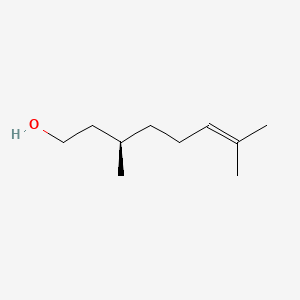| Authors | Title | Published | Journal | PubMed Link |
|---|---|---|---|---|
| Rehn M and Diener M | Cysteinyl leukotrienes mediate the response of submucosal ganglia from rat colon to bradykinin. | 2012 | Eur. J. Pharmacol. | pmid:22366210 |
| Song AA et al. | Functional expression of an orchid fragrance gene in Lactococcus lactis. | 2012 | Int J Mol Sci | pmid:22408409 |
| SestraÅŸ RE et al. | Poisson parameters of antimicrobial activity: a quantitative structure-activity approach. | 2012 | Int J Mol Sci | pmid:22606039 |
| Kim E and Park IK | Fumigant antifungal activity of Myrtaceae essential oils and constituents from Leptospermum petersonii against three Aspergillus species. | 2012 | Molecules | pmid:22945026 |
| Chaiyana W and Okonogi S | Inhibition of cholinesterase by essential oil from food plant. | 2012 | Phytomedicine | pmid:22510493 |
| Gallardo A et al. | Insecticidal activity of individual and mixed monoterpenoids of geranium essential oil against Pediculus humanus capitis (Phthiraptera: Pediculidae). | 2012 | J. Med. Entomol. | pmid:22493851 |
| Brito RG et al. | Citronellol, a monoterpene alcohol, reduces nociceptive and inflammatory activities in rodents. | 2012 | J Nat Med | pmid:22350215 |
| Babu RO et al. | Virtual screening and in vitro assay of potential drug like inhibitors from spices against Glutathione-S-Transferase of Meloidogyne incognita. | 2012 | Bioinformation | pmid:22553389 |
| Campbell BC et al. | Chemosensitization as a means to augment commercial antifungal agents. | 2012 | Front Microbiol | pmid:22393330 |
| Sui HY et al. | Involvement of protein kinase A activation and phospholipase A(2) inhibition in the adenosine-activated basolateral 50 pS K(+) channels in the thick ascending limb of the rat kidney. | 2012 | Sheng Li Xue Bao | pmid:22907306 |
beta-Citronellol
Beta-citronellol is a lipid of Prenol Lipids (PR) class. The involved functions are known as Glycolysis.
Cross Reference
Introduction
To understand associated biological information of beta-Citronellol, we collected biological information of abnormalities, associated pathways, cellular/molecular locations, biological functions, related genes/proteins, lipids and common seen animal/experimental models with organized paragraphs from literatures.
What diseases are associated with beta-Citronellol?
There are no associated biomedical information in the current reference collection.
No disease MeSH terms mapped to the current reference collection.
PubChem Associated disorders and diseases
What pathways are associated with beta-Citronellol
There are no associated biomedical information in the current reference collection.
PubChem Biomolecular Interactions and Pathways
Link to PubChem Biomolecular Interactions and PathwaysWhat cellular locations are associated with beta-Citronellol?
There are no associated biomedical information in the current reference collection.
What functions are associated with beta-Citronellol?
Related references are published most in these journals:
| Function | Cross reference | Weighted score | Related literatures |
|---|
What lipids are associated with beta-Citronellol?
There are no associated biomedical information in the current reference collection.
What genes are associated with beta-Citronellol?
There are no associated biomedical information in the current reference collection.
What common seen animal models are associated with beta-Citronellol?
There are no associated biomedical information in the current reference collection.
